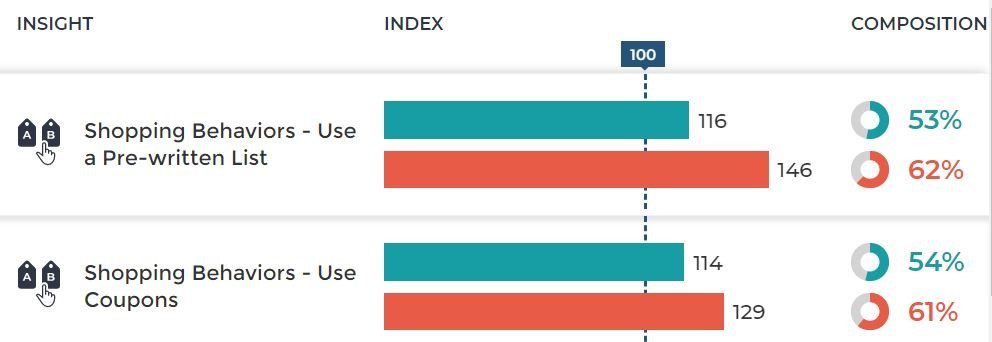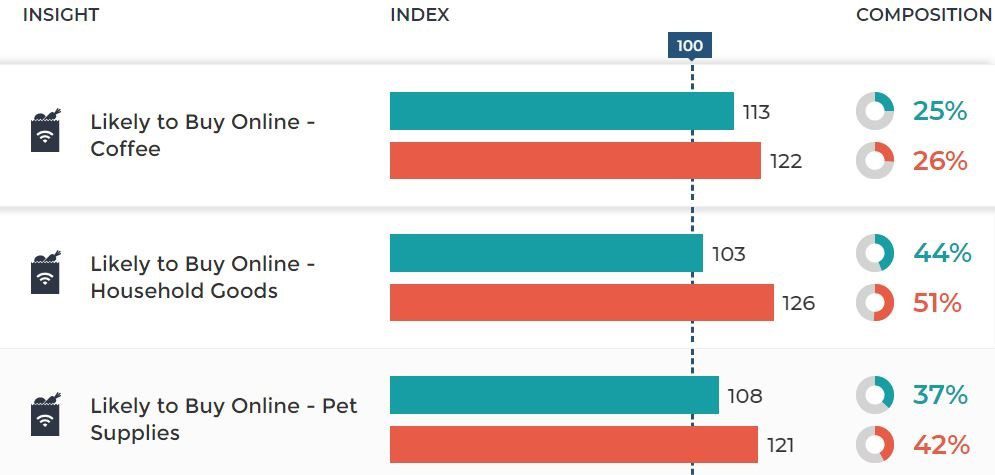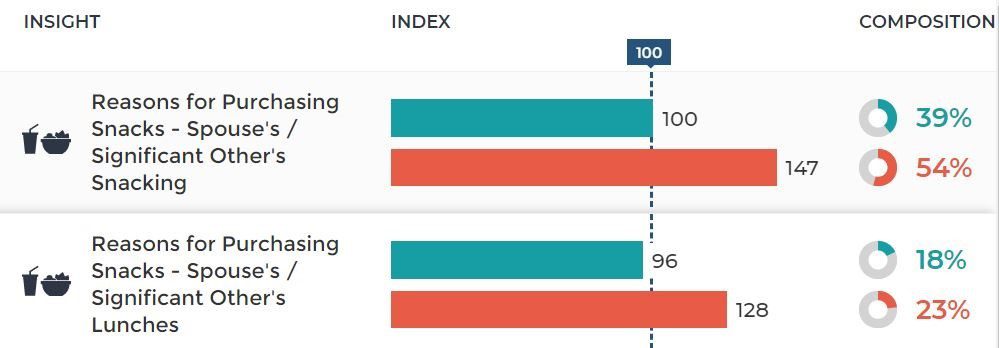It’s been over a month since many elected officials closed schools, non-essential businesses, public parks, etc. as a result of mandatory stay-at-home orders. People are doing everything at home from working, working out and going to school, which is causing a shift in consumer behavior and preference when it comes to grocery shopping. So, what exactly are shoppers doing differently now that we’re many weeks into this new way of life?
Who Are the Primary Grocery Shoppers?
Primary grocery shoppers are mostly married women ages 45-54 with an annual household income between $25-50K. This group has children over 18, and the likelihood of having them at home has increased by 17%, which makes sense as many college campuses have closed and forced students to move back home.
What Matters to Grocery Shoppers in the COVID-19 Era?
When it comes to key shopping factors, grocery shoppers care more now about product selection, loyalty programs and if stores are locally/independently owned. Their increased concern about a store being locally owned is likely due to the fact that many small, privately owned businesses are facing financial hardships as a result of the pandemic, and they want to show support for their local grocery store.
When it comes to their shopping behaviors, they’re 30% more likely than they were previously to use a pre-written list and 15% more likely than they were to use coupons. By using a pre-written list, they’re attempting to keep their purchases to only what they need, versus buying alluring items that catch their eye. These are financially trying times for everyone, explaining the increase in coupon usage.
Teal: Primary grocery shopper // Orange: Primary grocery shopper + COVID-19 engagement

Their likelihood to buy specific grocery products online has increased: coffee, household goods and pet supplies, and the top two reasons they do so is to avoid going to the store and to save money.
Teal: Primary grocery shopper // Orange: Primary grocery shopper + COVID-19 engagement

Since the coronavirus outbreak, this group is more likely to care that the food they buy is healthy, trustworthy and cost-effective, whereas before the outbreak they cared most that it was dependable and easy-to-use. Their increased concern for buying healthy food makes sense since they’re likely not able to exercise as much due to the restrictions.
When it comes to snacking specifically, there’s been a major increase in the reason this group buys snacks. In the last month, primary grocery shoppers are 45% more likely than they were to buy snacks for their spouse/significant other’s snacking habits and 32% more likely than they were to buy them for their spouse/significant other’s lunch. This aligns with the idea that everyone is snacking and eating lunch at home every day instead of eating out, hence the need to buy more snacks at the grocery store.
Teal: Primary grocery shopper // Orange: Primary grocery shopper + COVID-19 engagement

When it comes to the types of snacks people are eating, they’re buying less energy/protein bars, beef jerky and pretzels. The decrease in protein and energy bar purchases makes sense as people aren’t “on-the-go” the way they used to be. On the other hand, there’s been an increase in the purchase of nuts/seeds, meal replacement bars and yogurt.
Overall, consumer behavior and preference has changed when it comes to grocery shopping. This behavior changed as a direct result of the COVID-19 pandemic, so it’s critical to keep abreast of their behavior in the coming weeks and month. That’s why Resonate’s proprietary data is a game-changer for brands and agencies. Our data is highly accurate, scaled in 200 million U.S. adults and updated nightly.
To learn more about consumer sentiment and behavior surrounding COVID-19 in order to gain a competitive advantage, read our report: Understanding U.S. Consumer Sentiment in the Coronavirus Pandemic.



